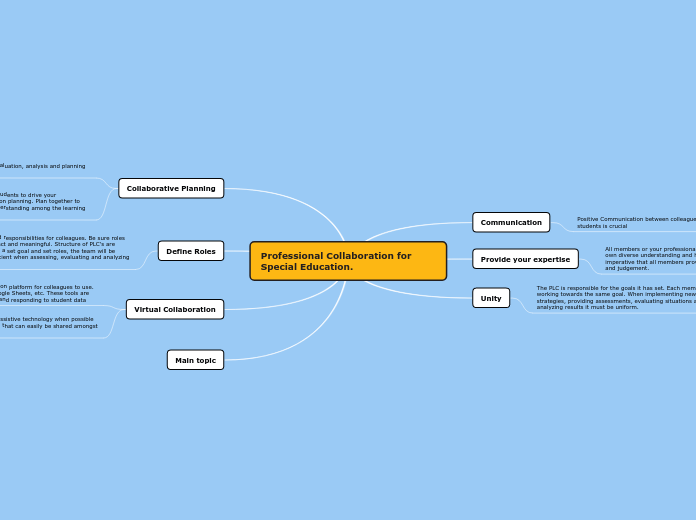Professional Collaboration for Special Education.
Communication
Positive Communication between colleagues, parents, and students is crucial
Provide your expertise
All members or your professional learning team provide their own diverse understanding and history of education. It is imperative that all members provide their professional input and judgement.
Unity
The PLC is responsible for the goals it has set. Each member is working towards the same goal. When implementing new strategies, providing assessments, evaluating situations and analyzing results it must be uniform.
Colleagues and students will be more engaged when a set goal and collective approach is used and responded to.
Collaborative Planning
Collaborate in assessment, evaluation, analysis and planning of materials together. .
Special Education teachers and Classroom teachers can combine to provide a more unified and equitable assessment strategy set for learners.
Use the data collected from students to drive your collaborative approach to lesson planning. Plan together to allow for input and create understanding among the learning team.
Define Roles
Define roles and responsibilities for colleagues. Be sure roles are clear, succinct and meaningful. Structure of PLC's are important. With a set goal and set roles, the team will be much more efficient when assessing, evaluating and analyzing student data.
Virtual Collaboration
Create an online collaboration platform for colleagues to use. Example: Google Docs, Google Sheets, etc. These tools are great for tracking, sharing and responding to student data
Use digital responses and assistive technology when possible to help gather student data that can easily be shared amongst colleagues
